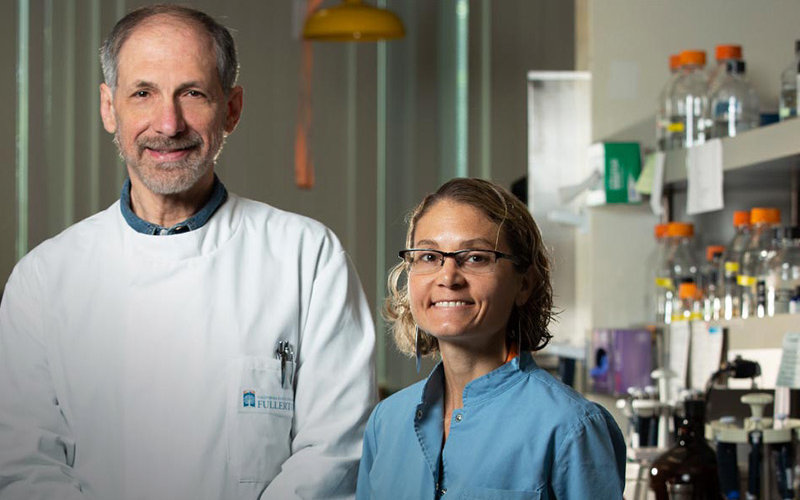
The life-threatening pathogen Acinetobacter baumannii is becoming one of the most critical health threats, especially among hospitalized patients.
To give the scientific community information and insights about this menacing superbug they are studying, Cal State Fullerton antibiotic-resistance researchers María Soledad Ramírez and Marcelo E. Tolmasky authored a new peer-reviewed article, recently published in the open-access journal Biomolecules.
The researchers’ article compiles the genetics, structure and physiology of all the Acinetobacter baumannii enzymes, known as “carbapenemases.” These enzymes cause resistance to “carbapenems,” a group of antibiotics used as a last resort on patients affected with multidrug resistant infections, said Tolmasky, professor of biological science.
The Centers for Disease Control and Prevention’s recent “Antibiotic Resistance Threats Report” also has listed carbapenem-resistant Acinetobacter baumannii as an “urgent” threat.
“Students and researchers that wish to inform themselves about this problem for educational purposes or to join the efforts to find solutions will find this article a comprehensive source,” Tolmasky added. “It provides a complete picture of the incidence and effects of multiple families of carbapenemases in the resistance of Acinetobacter baumannii.”
The paper had 2,300 downloads in the first 20 days after publication, which demonstrates the immediate impact it had on the scientific community, Tolmasky noted.
Both Tolmasky, a global leader in antibiotic-resistant research, and Ramírez, associate professor of biological science, are working on novel strategies to overcome superbug infections. Ramírez, first author of the article, focuses her research on how bacteria evolve toward multidrug-resistance, including Acinetobacter baumannii.
“Because of this bacterium’s ability to acquire antimicrobial resistance traits, it has become a highly problematic hospital-acquired pathogen with multiple clinical manifestations, such as pneumonia, meningitis, osteomyelitis, endocarditis, as well as infections in the bloodstream, urinary tract, lower respiratory tract, and skin and soft tissues,” Ramírez said.
Carbapenems are among the newest generation of antibiotics to fight bacteria and are usually used when infections are life-threatening and do not respond to other available drugs, Ramírez explained.
“Treatment has become ever more challenging,” she added. “But unfortunately, bacteria, and importantly Acinetobacter baumannii, are inactivating carbapenems and eliminating, in most cases, all treatment alternatives.”
Understanding the biology of carbapenemases will permit scientists to identify inhibitors that can render them inactive, making carbapenem-resistant Acinetobacter baumannii susceptible to treatment with carbapenems, Tolmasky added.
“While bacteria keep evolving strategies to survive available medical treatments, researchers continue coming up with new weapons to defeat otherwise fatal infections,” he said.
Contact: Debra Cano Ramos, dcanoramos@fullerton.edu